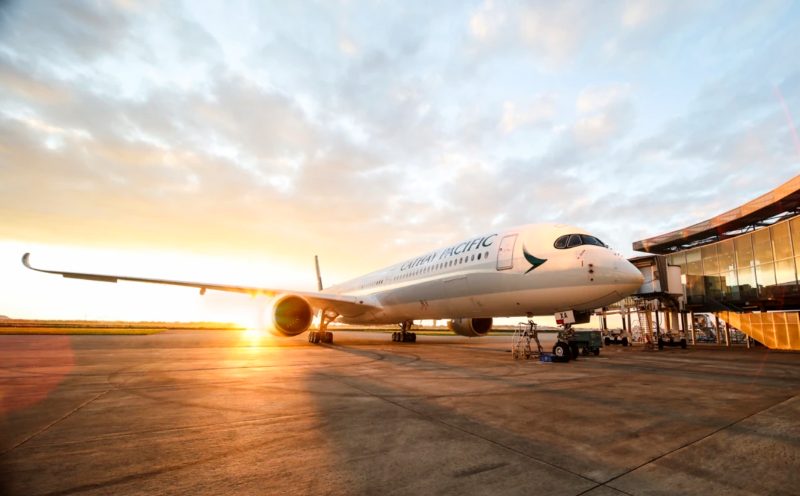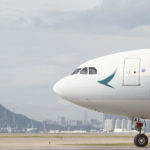
(TAN): The Cathay Pacific Group released its combined traffic figures for July 2020.
The figures reflected the airlines’ continued capacity reductions in response to reduced demand as well as travel restrictions and quarantine requirements in place in Hong Kong and other markets amid the ongoing global COVID-19 pandemic.
Cathay Pacific and Cathay Dragon carried a total of 42,984 passengers last month, a decrease of 98.7% compared to July 2019. The month’s revenue passenger kilometres (RPKs) fell 98.1% year-on-year. Passenger load factor dropped by 62.6 percentage points to 23.4%, while capacity, measured in available seat kilometres (ASKs), decreased by 92.9%.
[ALSO READ: British Airways extends flexible booking policy, to cover journeys till August 2021]
In the first seven months of 2020, the number of passengers carried dropped by 79.4% against a 69.9% decrease in capacity and a 76.6% decrease in RPKs, as compared to the same period for 2019.
The two airlines carried 102,129 tonnes of cargo and mail last month, a decrease of 39.8% compared to July 2019. The month’s revenue freight tonne kilometres (RFTKs) fell 33.3% year-on-year. The cargo and mail load factor increased by 12.7 percentage points to 75.8%, while capacity, measured in available freight tonne kilometres (AFTKs), was down by 44.5%.
In the first seven months of 2020, the tonnage fell by 33.1% against a 33% drop in capacity and a 25.9% decrease in RFTKs, as compared to the same period for 2019.
Passenger
Cathay Pacific Group Chief Customer and Commercial Officer Ronald Lam said: “Passenger volume showed signs of slight improvement in the beginning of July, fuelled by a boost in the number of transit passengers via Hong Kong. We increased our passenger flights by a slight amount to approximately 7% of the normal capacity, up from about 4% in June, and gradually resumed some services to Chengdu, Xiamen, Frankfurt and Toronto.”
[ALSO READ: Served to tourist- EUR 6 salad, which is just a plate of tomatoes]
However, demand tapered down towards the end of the month as new waves of COVID-19 cases arose in numerous countries. As a result, passenger volume increased at a lower rate than capacity for July, and load factor further dipped to 23.4%. There were a few services that performed better than expected comparatively, notably Xiamen.
Cargo
Cargo continues to be the better performer of the business. Tonnage improved month-on-month by approximately 10%, though this was still significantly down from last year’s levels due to the significant reduction in cargo capacity provided by belly space on passenger flights. Load factor remained high at 75.8%.
“Certain markets performed particularly well, notably the Indian subcontinent, which recorded a noticeable uptick as local lockdown measures were eased. We also saw reasonably strong month-end rushes for air freight demand in Hong Kong and the Chinese mainland,” Lam said.
“Further to our existing efforts to increase available cargo capacity, since early July we have begun operating cargo-only passenger flights using select converted Boeing 777-300ER aircraft that have had some of the seats from the Economy Class cabin removed. This has enabled us to load shipments such as personal protective equipment (PPE) and garments in the passenger cabins inside fire-retardant cargo bags,” Lam said.
[ALSO READ: Marriott International reports USD 234 million net loss in Q2]
Outlook
The global aviation sector continues to face major headwinds as a result of the COVID-19 pandemic and the associated travel restrictions that have been implemented. The International Air Transport Association (IATA) has now adjusted its forecast for when international passenger demand will return to pre-pandemic levels to 2024, one year later than its previous estimate.
“As new waves of COVID-19 cases have emerged in Hong Kong and elsewhere, we have adjusted our passenger flights for August to approximately 8% of the normal capacity, which remains subject to the potential further relaxation or tightening of government health measures. We expect that our airlines will operate a similar level of passenger flight capacity in September,” Lam said.
“Meanwhile, we welcome the resumption of transit services via Hong Kong International Airport for passengers from the Chinese mainland. This will help enhance our passenger volume via the Hong Kong hub, and offer essential connections from the Chinese mainland to different parts of the world,” Lam added.
In addition to the COVID-19 pandemic, the group said it has to contend with a looming global recession and geopolitical tensions, which are expected to have a negative impact on both air travel and cargo demand. It is obvious that there will be no return to normal demand conditions any time soon.



